During the past 12 months, the 300 scientists and researchers working for the Museum described at least 272 new species.
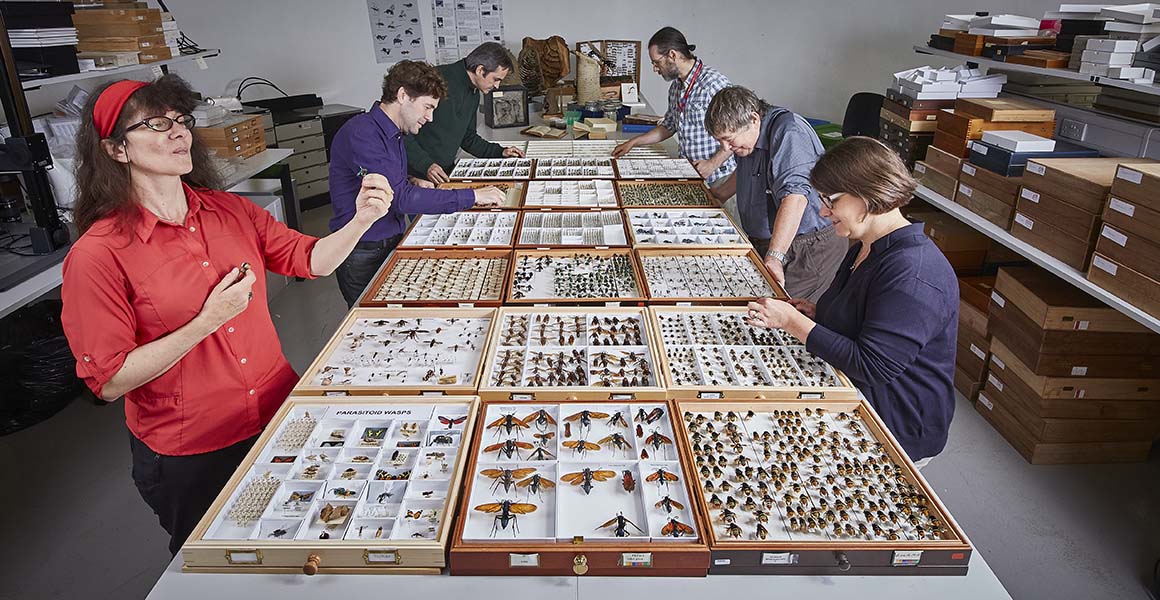
Museum scientists have described some 272 new species this year, including 26 new parasitic wasps © The Trustees of the Natural History Museum, London
It's been a busy year for the Museum.
From dinosaurs to swamp eels, hundreds of new species of animals, minerals, plants, algae and foraminifera have been described by researchers.
By going out into the field, as well as cataloguing some of the 80 million specimens already held by the Museum, scientists have continued to add to our understanding of the natural world both past and present.
Researchers have described an astonishing diversity of species, both living and extinct - including new dinosaurs, ancient wombats and a giant shark.
Dr Tim Littlewood, Head of Life Sciences at the Museum, says, 'The Museum has been in the business of taxonomy and systematics since its founder, Sir Hans Sloane, was naming, classifying and organizing his own vast collections of natural history.
'Today, our scientists are still in the business of systematics - it is key to managing a natural history collection - but techniques have changed since Sloane's time. Advances in imaging, microscopy, biochemical analyses and especially molecular biology have provided new data beyond traditional morphology with which to differentiate or unite groups of organisms into species.'
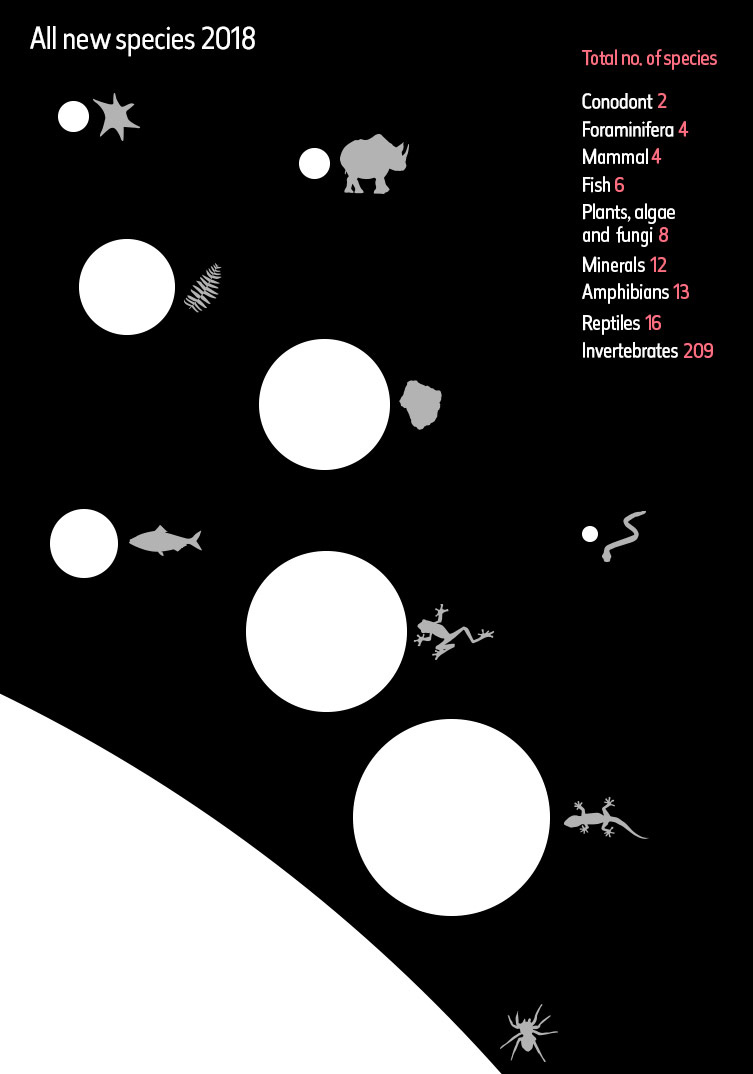
There were at least 272 new species described by Museum staff this year, but this was mostly dominated by the invertebrates © The Trustees of the Natural History Museum, London
Swamp eels and snakes
Scientists have documented a total of 224 new living species from 18 different groups.
This includes a new species of black nightshade plant (Solanum ), two rattlesnakes (Crotalus and Crotalus ), and a legless amphibian known as a caecilian that was found in (Hypogeophis ).
One of the most unusual discoveries this year has to be the hot pink, blind swamp eel (Monopterus ). While most fish are known to live in the water, this one was instead found burrowing through the damp rainforest soil of north-eastern India. Likely blind, it breathes not with gills but through the lining of its mouth and skin.
This is not the only new species to have been described from India this year.
Scientists have found 12 new species of lizard, four new species of frog and a shieldtail snake that also makes a living burrowing through the soil (Uropeltis ). These have hailed from all over the country, from the Western Ghats in the east to the Khasi Hills in the west.
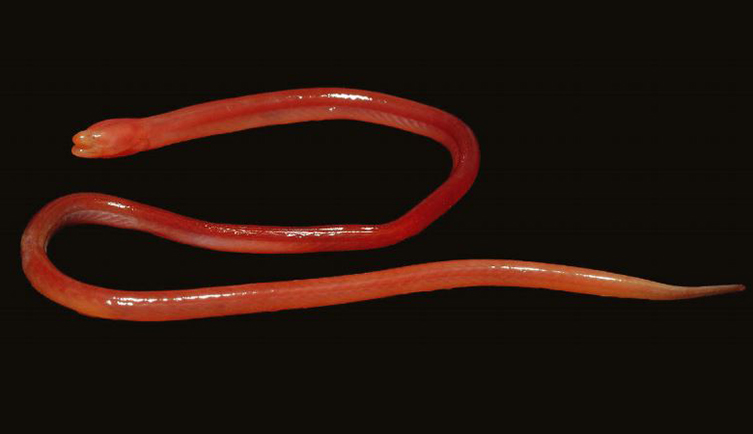
The swamp eel is considered one of the least 'fish-like' of fishes © Rachunliu G Kamei
Introducing invertebrates
With over 95% of all known animal species being invertebrates, it is perhaps unsurprising that invertebrates are the most numerous of the new species described by Museum researchers.
Including butterflies, spiders, bryozoans, parasitic wasps, copepods and giant flesh flies, the diversity covers a huge range of groups.
The depths of the ocean have been particularly rich for new species, as researchers have documented 13 new marine worms and three new deep-sea sponges. With as little as a fifth of the Earth's sea bed having been mapped in detail, it is certain that there are many more creatures living on the sea bed yet to be discovered.
But even within the invertebrates, the number of new species described is dominated by a single group of insects: the beetles. This year at least 107 new species of beetle been described.
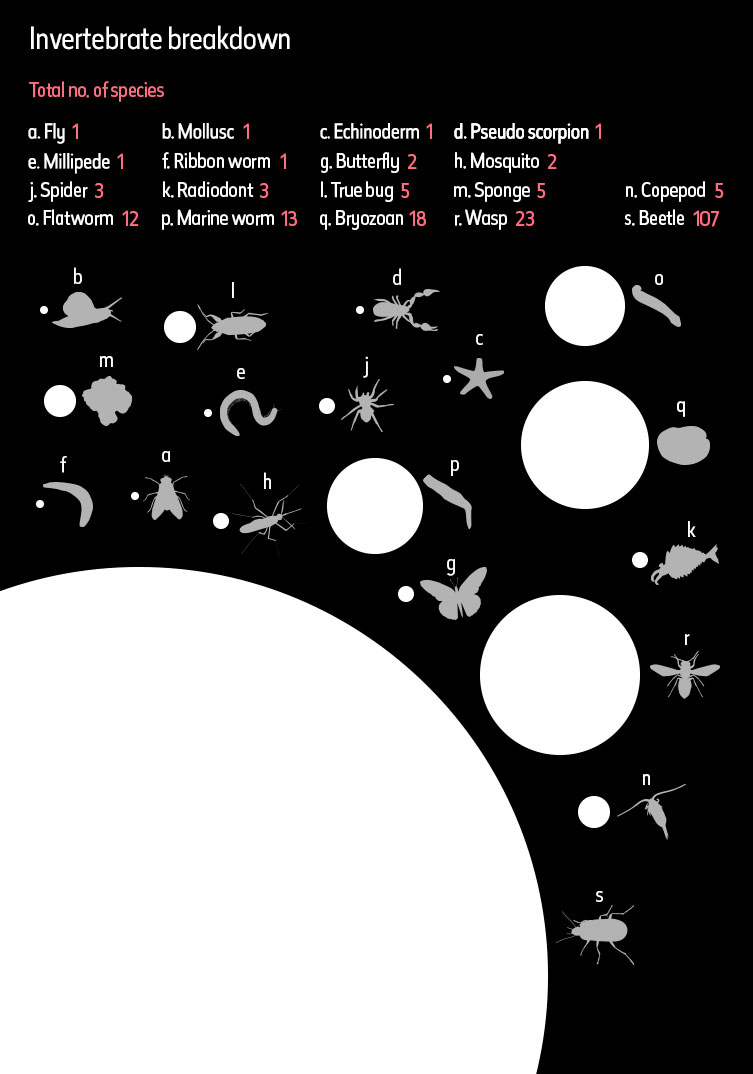
The diversity of new invertebrate species described is huge, but once again has been dominated by a single group - the beetles © The Trustees of the Natural History Museum, London
Max Barclay, Curator in Charge of Beetles at the Museum, says, 'In my opinion, the best new species story of 2018 is a paper by the Museums' Joana Cristóvão and Chris Lyal.
'This includes an amazing geographical extension of a rare group of tropical forest weevils - most of which were collected by other Museum colleagues in Sao Tome, Sierra Leone the Ivory Coast.'
Five of the seven new species of beetle described by Cristóvão and Lyal are named after Museum staff and associates, including not only Max but also Senior Curator of Beetles Beulah Garner and Curator of Beetles Michael Geiser.
In addition to being new species, they also all belong to an entirely new genus. Named Titilayo from the Yoruba language which is spoken in many countries in Western Africa, it means 'everlasting joy'.
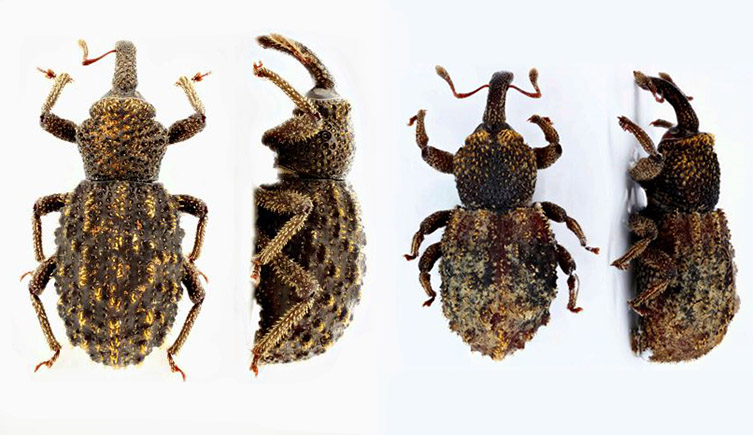
Among the abundance of new beetle species are T. and T. named after Museum staff © Cristóvão et al. 2018
New species from the ancient world
The Museum's new ancient species include three new members (and two new genera) of an extinct group of arthropods known as .
Appearing during the Cambrian (541 to 485.4 million years ago), these creatures are the earliest large-bodied predators known from the fossil record. With a flattened, segmented body and paired, grasping appendages they would have swum the oceans along with other early animals like trilobites.
Fast-forward a few hundred million years and in the outback of the Museum's Curator of Fossil Mammals Pip Brewer uncovered a new species of fossil wombat (Rhizophascolonus ) dating to 23 million years old.
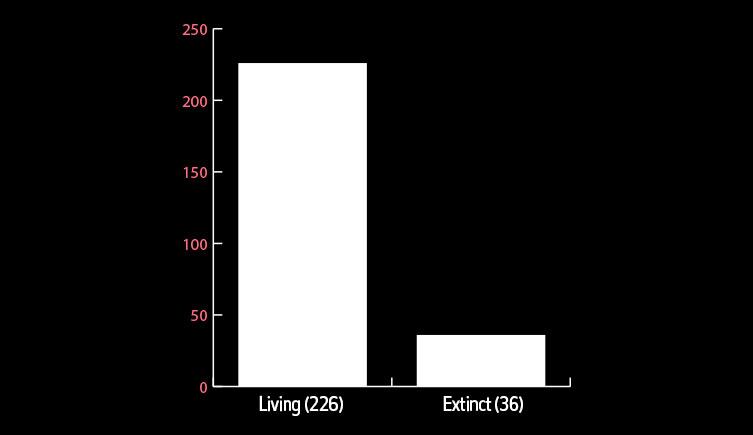
While most of the new species described are living, some of the most impressive discoveries have been those that are now extinct © The Trustees of the Natural History Museum, London
'This discovery is exciting because so little is known about the evolutionary history of wombats, so being able to scratch away at that and find a new one is kind of fun,' says Pip.
'Describing fossil species is the basis on which all other palaeontological work is done. It is the very foundation, as unless we know and can define species then we can't do any other analyses, such as palaeo-environmental reconstructions and how climate has changed through time.
'It allows us to answer the big questions we want to solve.'
Joining the and wombat are an extinct giant thresher shark (Alopias ), a smattering of fossil mammals and a new species of sauropod dinosaur (Lingwulong ) from China that has forced a rethink as to how these giant animals dispersed around the world during the Jurassic.
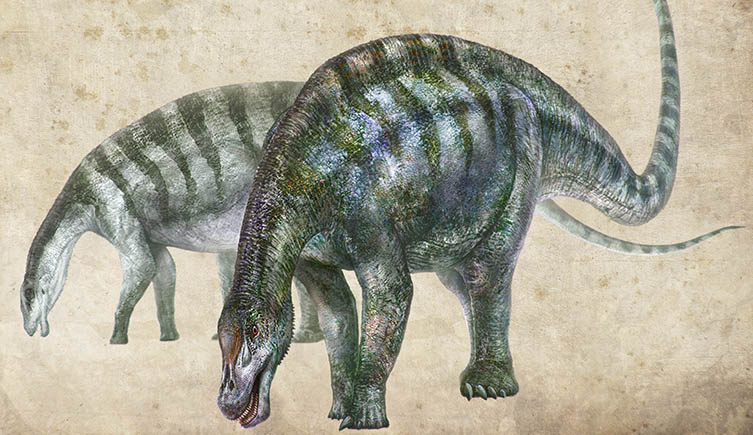
The new sauropods are the first time that have been found in Asia © Zhang Zongda
New species of rock
It is not only animals and plants that researchers have been working to classify.
The Museum's Earth Sciences has been busy discovering and describing new minerals and meteorites.
There are currently over 5,500 known mineral species globally, with around 100 new species being added to the list each year. In 2018, Museum scientists managed to describe an impressive 11 new minerals and one new meteorite.
Chris Stanley, a Researcher of Ore Mineralogy at the Museum, says, 'New minerals are rarely found in large amounts but their importance lies in the fact that they may have new chemistries or structures which could prove to be of use in the material science world.'
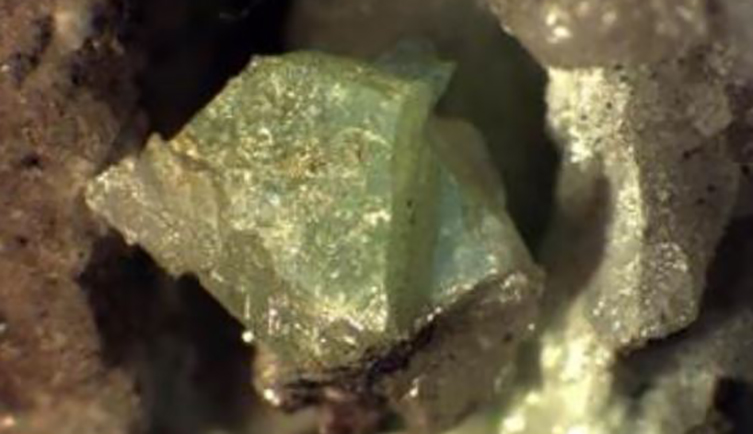
is a newly described mineral discovered in the Mendip Hills © Siidra et al. 2018
The minerals have been discovered from Russia to Bolivia, with Somersetite even hailing from the Mendip Hills of south-west England.
' is a new mineral from the Torr Works in Somerset, England,' says Chris. 'This locality is also the type locality for a number of lead oxychloride minerals at the Museum over many years.'
The new meteorite belongs to a rare class known as ureilites. While its origin is unknown, it is thought that it may have formed within a planetary embryo of a parent body between the size of Mercury and Mars.
'Of around 60,000 known meteorites, there are only 513 known ureilites,' explains Chris. 'This is the latest ureilite acquired - one of only 17 represented in the Museum collection. They are a particularly interesting group of achondrites, known for their considerable carbon content, which is present as graphite and diamond.'
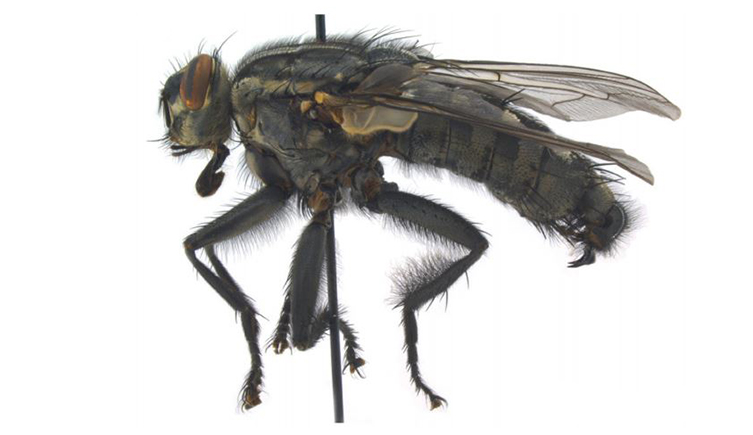
This newly described giant Turkish flesh fly (Sarcophaga ) is larger than any other known Palaearctic flesh fly © Whitmore et al. 2018
The Museum's foundation
The discovery and description of new species is only part of the work carried out by researchers at the Museum, but it is a vital task as the documentation of the natural world underpins the Museum.
Only through understanding what exactly exists and how all these species relate to one another - known as taxonomy - can scientists then start to answer larger questions. It can allow others to see how species ranges are changing in relation to climate change, for example, or how best to conserve certain species that are spread over large distances.
Dr Littlewood added, 'We are losing biodiversity faster than we are capable of recognizing it. Biological species discovery, whether in our existing collections or by means of field collecting, remains a frontier science.'
Explore the collections
From giant fossil mammals to mysterious moths, uncover the colourful stories behind some of the Museum's most fascinating specimens.


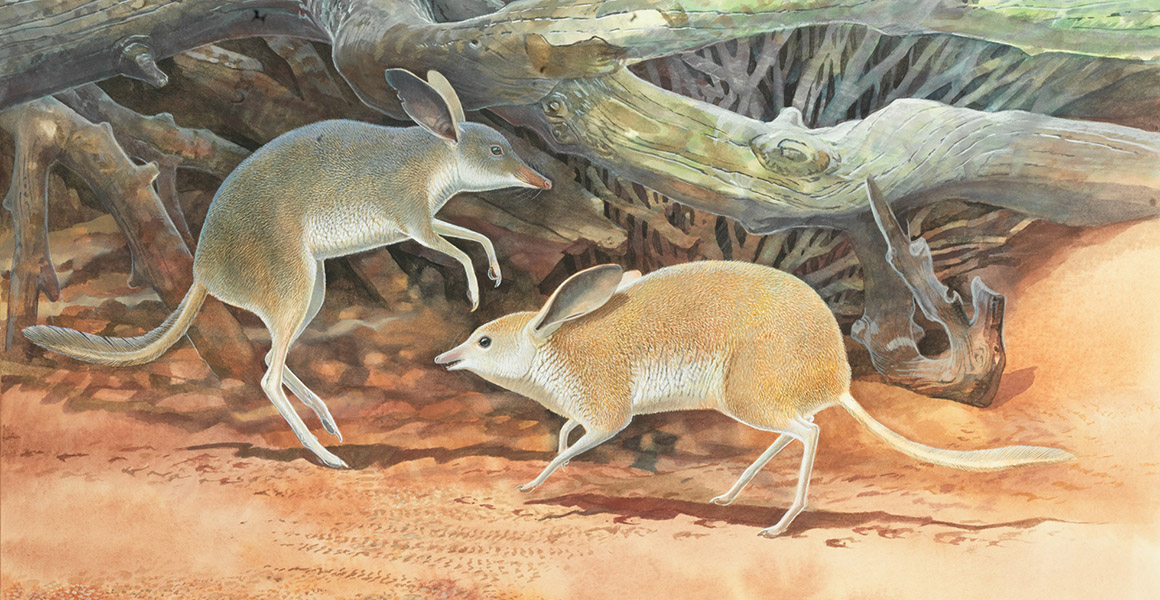
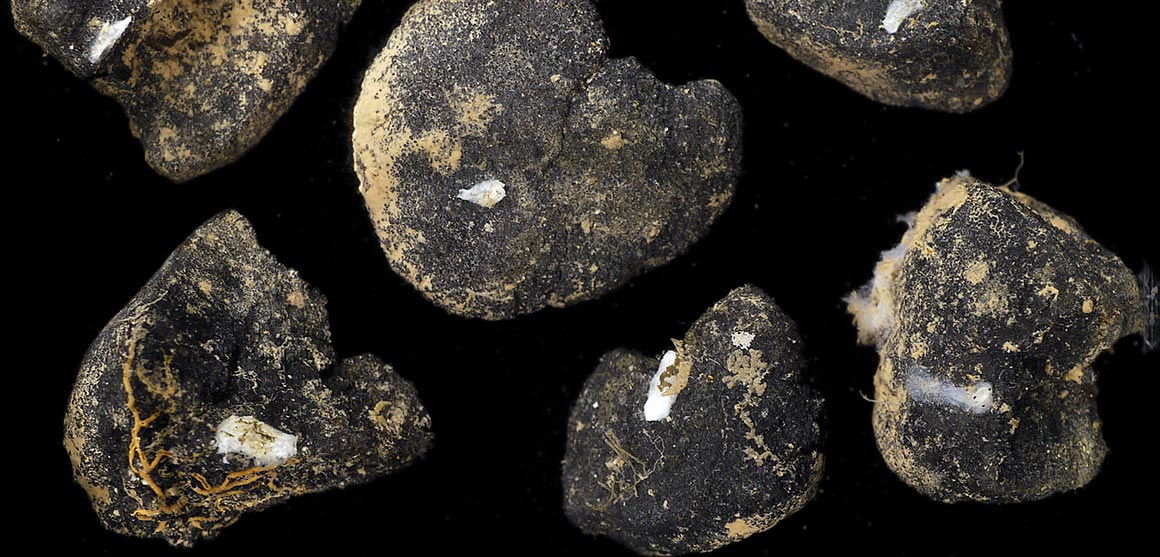
Don't miss a thing
Receive email updates about our news, science, exhibitions, events, products, services and fundraising activities. We may occasionally include third-party content from our corporate partners and other museums. We will not share your personal details with these third parties. You must be over the age of 13. Privacy notice.
Follow us on social media